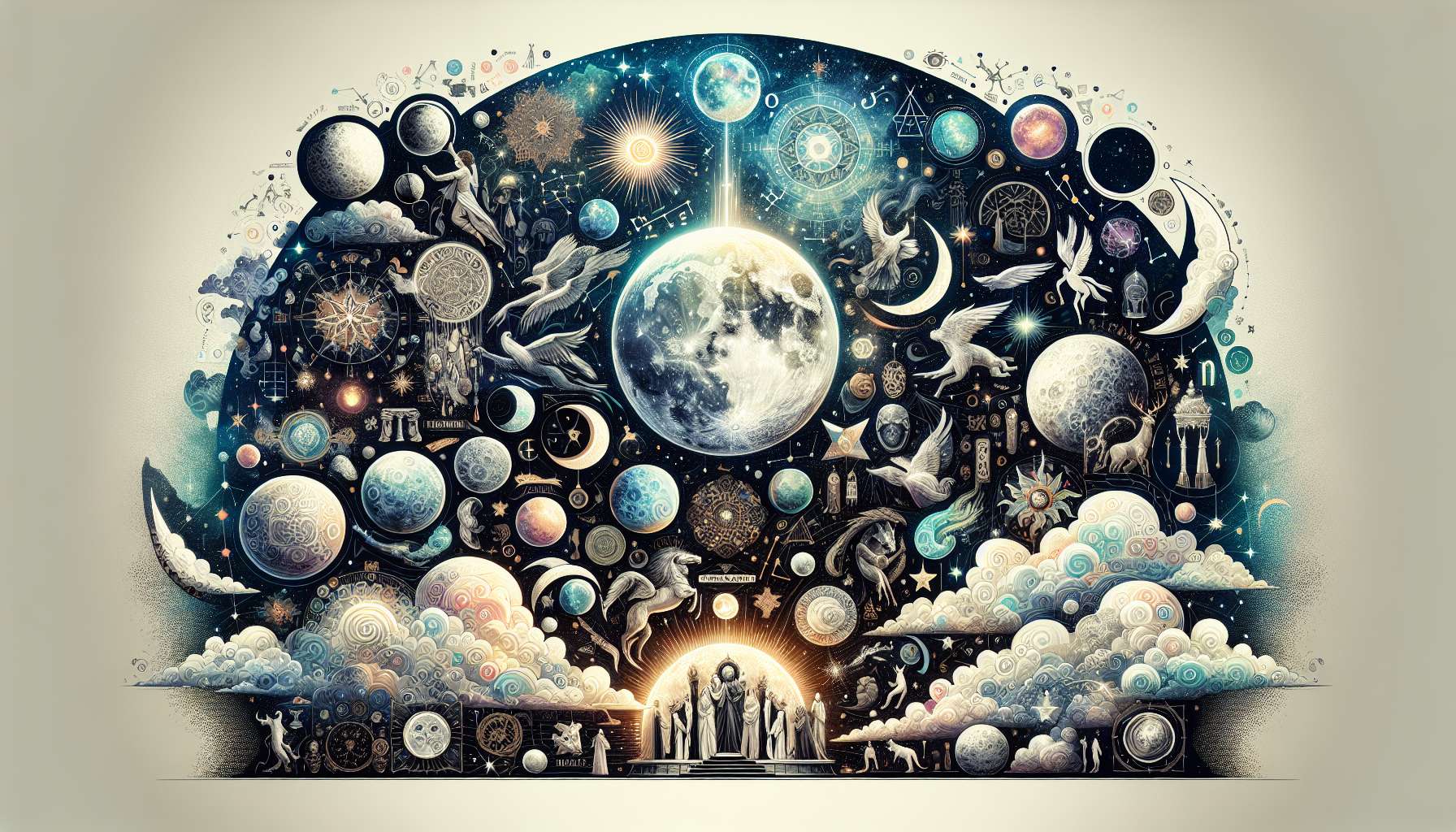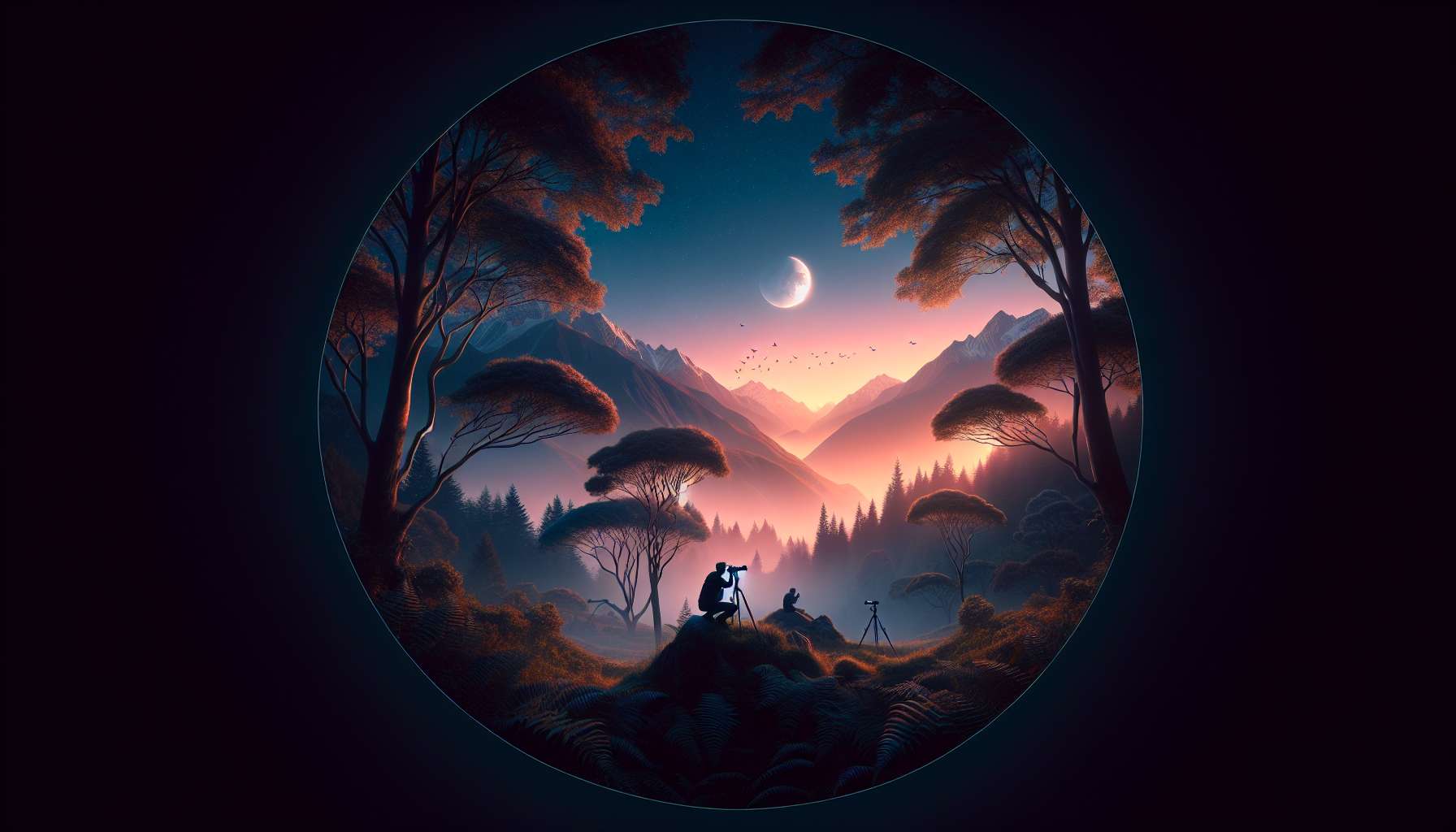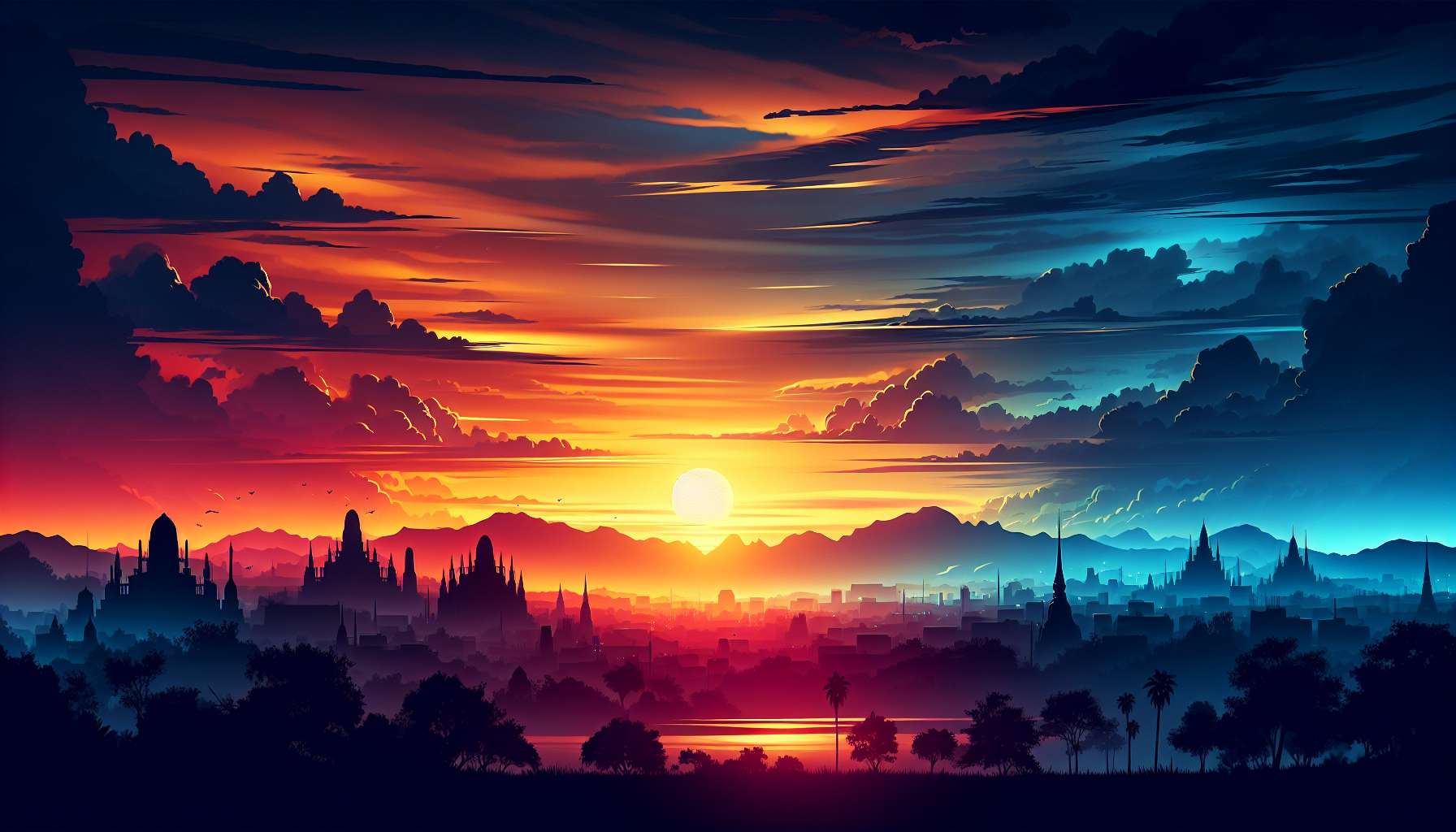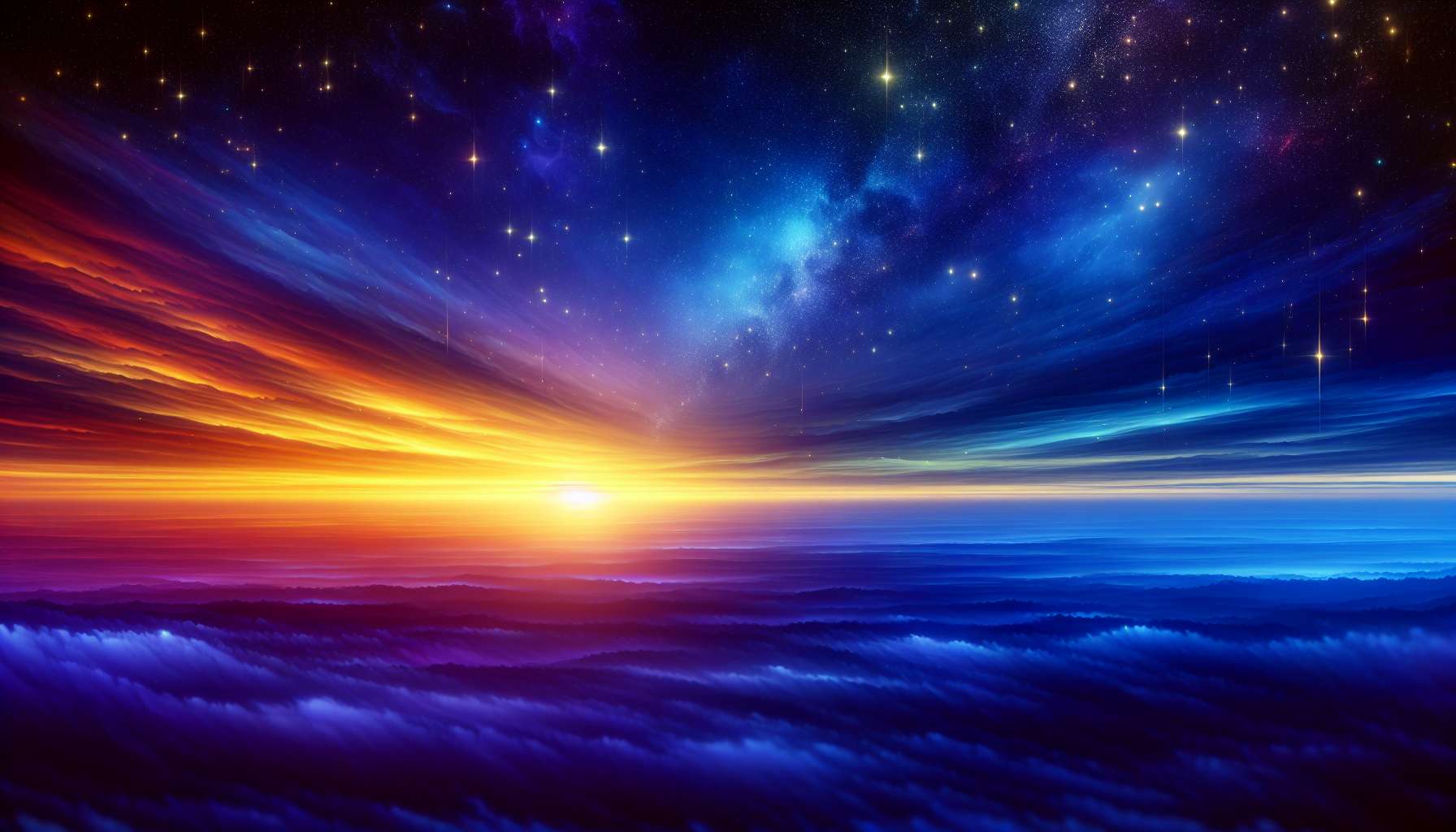Lunar Mythology in Art: Exploring the Mystical Connection
When we gaze up at the night sky and see the silver glow of the moon hanging in the darkness, it evokes a sense of wonder and mystery. The moon has captivated human imagination for centuries, inspiring myths, legends, and artistic creations. In this article, we delve into the intriguing realm of lunar mythology in art, exploring the profound connections between the celestial body and human creativity.
The Moon in Ancient Mythology
From the ancient civilizations of Mesopotamia and Egypt to the classical myths of Greece and Rome, the moon has held a prominent place in mythological narratives. In Mesopotamian mythology, the moon god Sin was revered as a powerful deity associated with wisdom and the tides. In Egyptian mythology, the goddess Isis was often depicted with a crescent moon on her head, symbolizing fertility and protection. The Greeks worshipped the goddess Artemis, who was linked to the moon and hunting.
These ancient myths and deities served as sources of inspiration for artists throughout history. Paintings, sculptures, and other works of art often depicted lunar motifs, such as crescent moons, lunar cycles, and celestial bodies. The moon’s mystical qualities were captured in intricate detail, reflecting the spiritual significance of the lunar realm.
The Moon in Symbolism
Throughout various cultures and artistic traditions, the moon has been imbued with symbolic meanings and interpretations. In Western art, the moon is often associated with femininity, intuition, and the subconscious mind. The moon’s phases from the new moon to the full moon symbolize cycles of growth, change, and renewal.
In Eastern art and philosophy, the moon represents yin energy, darkness, and receptivity. In Chinese culture, the moon is a symbol of harmony, enlightenment, and the cyclical nature of life. The Japanese tradition of Tsukimi, or moon-viewing, celebrates the beauty and serenity of the moon’s reflection on water.
Contemporary artists continue to explore the symbolism of the moon in their work, using its imagery to convey themes of spirituality, mysticism, and interconnectedness. The moon serves as a powerful symbol that transcends cultural boundaries and speaks to the universal human experience.
The Moon in Literature and Poetry
Writers and poets have long been fascinated by the enigmatic allure of the moon, incorporating its imagery into their literary works. From Shakespeare’s sonnets to Emily Dickinson’s poems, the moon has been a recurring motif that evokes a sense of transcendence and beauty.
In the realm of fantasy and science fiction, the moon takes on a fantastical quality, serving as a gateway to other worlds and dimensions. From Jules Verne’s “From the Earth to the Moon” to Ursula K. Le Guin’s “A Wizard of Earthsea,” the moon becomes a symbol of exploration, mystery, and transformation.
Many classic works of literature use the moon as a metaphor for love, longing, and the passage of time. In “Romeo and Juliet,” Shakespeare writes, “It is the east, and Juliet is the sun.” The moon’s romantic associations have inspired countless poets and writers to craft verses that capture the ethereal beauty of the night sky.
The Moon in Visual Arts
Visual artists have long been drawn to the luminous and ethereal qualities of the moon, using its imagery to create stunning works of art. From Vincent van Gogh’s “Starry Night” to Georgia O’Keeffe’s “Black Iris III,” the moon’s influence can be seen in a wide range of artistic styles and movements.
The moon’s ever-changing phases and celestial glow have inspired artists to experiment with light, color, and texture in their creations. The use of silver and blue tones, shimmering surfaces, and ethereal compositions evoke the mystical and otherworldly essence of the moon.
Contemporary artists continue to push the boundaries of traditional artistic representations of the moon, using digital technology, mixed media, and installation art to explore new ways of capturing its luminous beauty. The moon serves as a muse for artists seeking to express the ineffable and transcendent aspects of the human experience.
The Moon in Music and Dance
The moon’s enchanting presence has also inspired musicians and dancers to create evocative works that celebrate its beauty and mystery. From Beethoven’s “Moonlight Sonata” to Debussy’s “Clair de Lune,” composers have used the moon as a source of inspiration for their musical compositions.
In the realm of dance, the moon’s poetic symbolism and ethereal qualities have been translated into mesmerizing choreography and performances. Ballets such as “Swan Lake” and “La Bayadre” feature moonlit scenes that convey a sense of magic and enchantment.
Contemporary musicians and dancers continue to explore the theme of the moon in their creative expressions, using sound, movement, and visual effects to evoke the cosmic and spiritual dimensions of the lunar realm. The moon’s influence on music and dance is a testament to its enduring appeal as a source of artistic inspiration.
Expert Opinions
Renowned art historian Dr. Anna Johnson states, “The moon has been a central motif in the history of art, representing a symbol of mystery, beauty, and the unconscious mind. Artists throughout the ages have been captivated by the moon’s luminous glow and ethereal presence, using its imagery to convey deep spiritual and emotional truths.”
Contemporary artist Michael Chen adds, “As an artist, I am constantly drawn to the moon’s ever-changing and enigmatic qualities. Its cyclical nature and ethereal beauty inspire me to create works that explore themes of transformation, renewal, and interconnectedness.”
Common Misconceptions
One common misconception about lunar mythology in art is that it is limited to traditional or religious themes. In reality, artists have been reinterpreting the symbolism of the moon in innovative and provocative ways, pushing the boundaries of artistic expression and challenging conventional notions of beauty and aesthetics.
Another misconception is that lunar mythology is solely a Western phenomenon. In truth, cultures around the world have their own unique interpretations of the moon’s symbolism, reflecting diverse perspectives on nature, spirituality, and the human condition.
Comparative Analysis
When comparing different artistic representations of the moon, we can see a wide range of styles, techniques, and interpretations. While some artists choose to depict the moon in a realistic and naturalistic manner, others opt for abstract or symbolic representations that convey deeper meanings and emotions.
By examining how artists from various cultures and time periods have approached the theme of the moon in their work, we gain a greater appreciation for the diversity and richness of artistic expression. Each artist brings their own unique perspective and creative vision to the timeless motif of the moon, resulting in a fascinating tapestry of styles and interpretations.
Conclusion
To wrap things up, lunar mythology in art offers a captivating journey into the realms of mystery, beauty, and spiritual transcendence. From ancient myths and symbols to contemporary interpretations and expressions, the moon continues to inspire artists across various disciplines to create works that evoke the ethereal and transformative essence of the lunar realm.
As we gaze up at the night sky and marvel at the silver glow of the moon, let us remember the profound connections between the celestial body and human creativity. The moon’s enduring presence in art serves as a reminder of the timeless allure of the unknown and the infinite possibilities of artistic expression.
So, the next time you find yourself entranced by the luminous beauty of the moon, take a moment to reflect on the rich tapestry of lunar mythology in art and the profound impact it has had on human culture and creativity throughout history.




